For many a homesteader, putting meat on the dinner table is not a simple, thoughtless endeavor. Meat is precious.
The chicken we roast for an evening meal isn’t just a random chunk of flesh from the supermarket, but a bird that we carefully raised and protected until the dinner bell tolled.
As such, making sure that every scrap of that bird is used well both honors the animal’s life and makes the most of our considerable effort to raise it. Here are my homestead methods for turning one chicken into five meals that are progressive and flavorful.
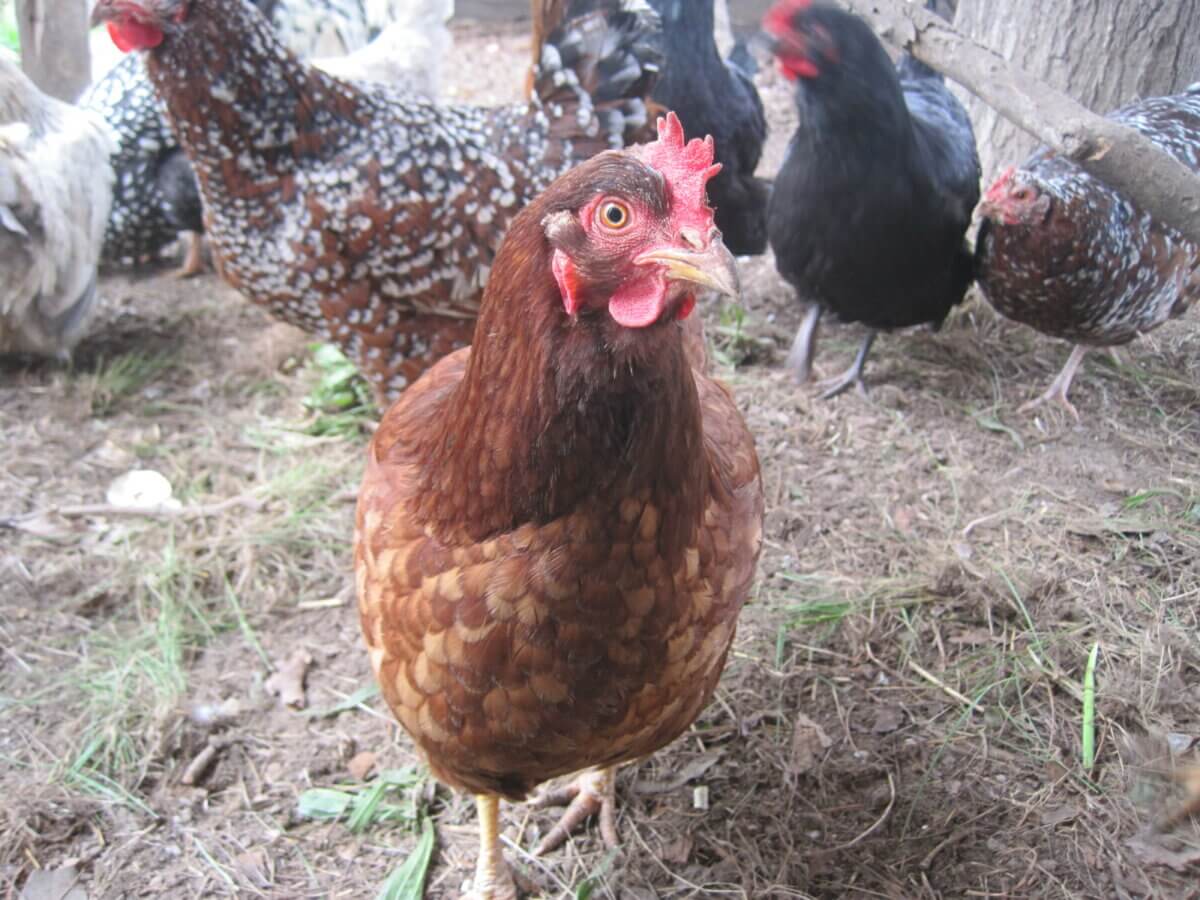
This idea for a series of meals is not a set of recipes per se, but more a mindset of using a precious resource as thoroughly as possible. I mean it to be an inspiration — but you certainly don’t have to use as much garlic or cayenne as I do!
Though it may seem pretty spartan to say a single chicken could make five meals for a family of four, it is possible, filling, and quite delicious. To truly enjoy one of your lovingly-raised, homegrown birds, however, you’ll need to shift your paradigms concerning meat.
Related Post: 15 Canned Chicken Recipes
American dinner servings are massive compared to many other countries. But it’s not only the amount that sets the stereotypical American dinner apart. It’s the ratio of meat to anything else. A plate loaded with an entire pound of chicken meat, three asparagus spears, and a white bread roll wouldn’t give someone pause.
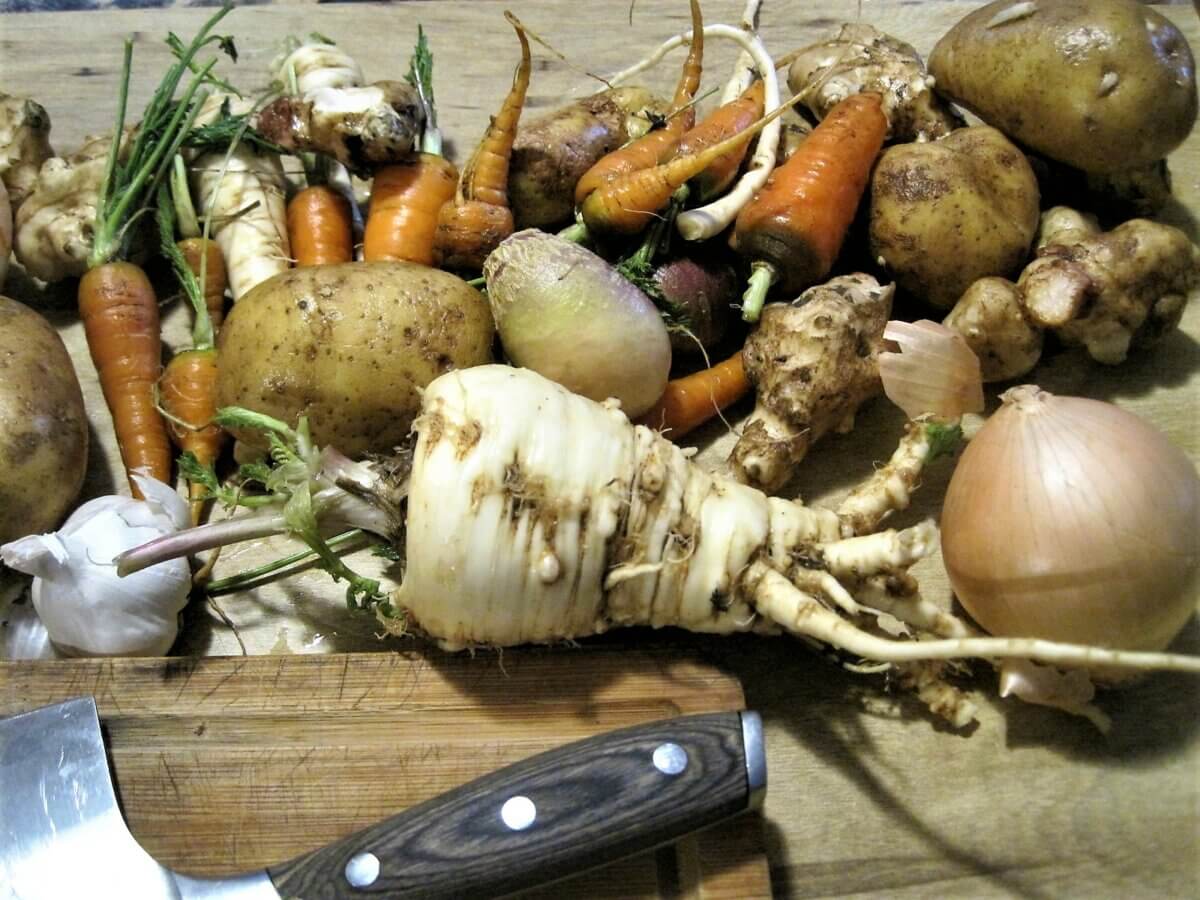
When you raise heritage poultry, however, you know that an entire pound of meat was a heck of a lot of work. I offer this challenge for anyone looking to make their meat matter more: Simply flip the ratio of vegetable and meat material, and you’ll not only have a healthier dinner, but a thoughtfully frugal one as well.
I like to think of meat as the flavoring of a meal, but never the bulk — that is the job for whole grains and vegetables. With that said, let’s talk about a hypothetical narrative that uses the entire bird as much as possible.
Meal #1: Slow-Cooked Roast
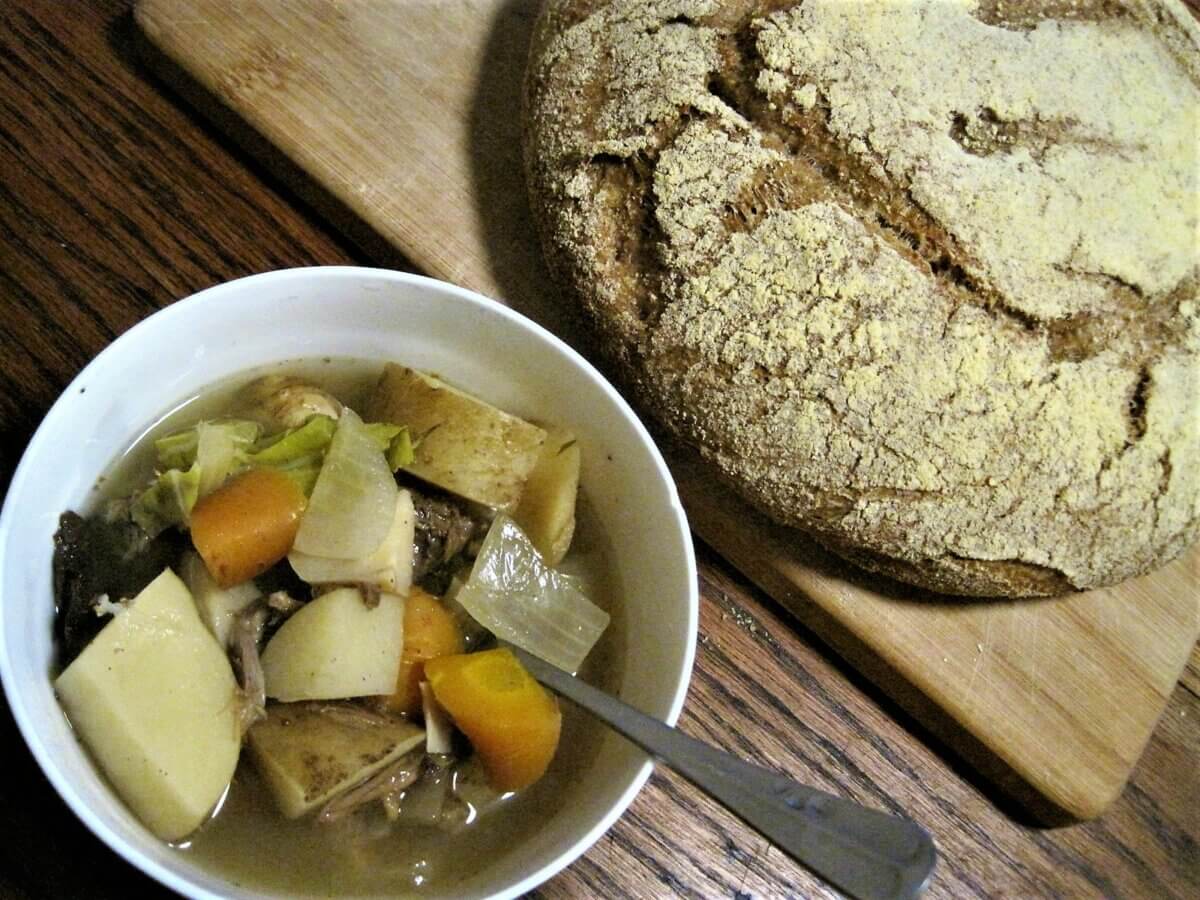
If you’re taking out an older layer or rooster, butcher it quickly, give the raw feet, head, and intestines to the dog (if he’s used to a raw food diet, of course), and quickly chill the carcass, heart, liver, and cleaned gizzard.
The raw organs go in the freezer. You will use them later. If you’re already starting with one of your young freezer birds, make sure they are decently thawed.
Directions
- Load your biggest roast pan with potatoes, carrots, onions, celery, garlic, or whatever other root vegetables tickle your fancy.
- Nestle the raw bird in her veggie bed, season with salt, pepper, cumin, red pepper flakes, thyme, a few bay leaves, and whole coriander seeds.
- Fill the pan with water until it reaches the edge. Cover, and cook low and slow with whatever method is best for your kitchen. On our homestead, the preferred way is to set the covered roasting pan directly on the wood stove, and let it gently simmer the entire day.
- Check it periodically to make sure the broth level stays up and the meat is as immersed as possible.
- Now, as good as this bird will smell, remember that she is not the majority of dinner. When the dinner bell rings, pull the meltingly tender chicken out of the broth, portion out the leg and thigh meat into each bowl (reserving the rest for later) and fill the rest of the bowl with veggies and a good ladle of the broth.
Paired with some fresh-baked whole wheat sourdough bread, butter, and a salad, your family can have a full stomach with plenty of bird left for the next meals.
After eating, portion out the rest of the chicken:
- Separate the breast meat and put it in a container.
- Pour off the broth into a different container.
- Carefully remove as much residual meat from the bones as you can, and mix it with the rest of the leftover vegetables. Put this meat-vegetable mix into a third container.
- And finally, put all the bones, clinging cartilage, and other birdy bits into a fourth container.
You are now set up for the rest of the meals. You can freeze these containers or put them in the refrigerator, depending on what you want to cook next.
Meal #2: Drop-Biscuit Pie
With all the slow-simmered vegetables and meat bits left over from the first roast, you can make an absolutely delicious cobbler for dinner in record time.
Ingredients
- Reserved organ meat
- 1 onion, diced
- 2 cloves of garlic, minced
- 2 tablespoons flour
- Reserved broth from the roast
- Leftover vegetables and meat bits from the roast
For the Biscuits
- 2 cups whole wheat flour
- 1 teaspoon baking soda
- 1 teaspoon cayenne pepper
- 1/2 teaspoon salt
- 4 tablespoons butter
- 1-2 cups buttermilk
Directions
- Slice the organ meats that you reserved earlier, and simmer in a few tablespoons of butter or oil.
- Add the garlic and onion. Season with salt, pepper, thyme, oregano, paprika, and any other spices as desired.
- Once the onions are slightly browned, sprinkle the flour over the mix and stir until all pieces are coated.
- Mix in broth, one-half cup at a time, until the flour has turned into a loose gravy.
- Finally, add the leftover vegetables and meat bits from the previous meal, stirring gently.
- Pour this fragrant mixture into the bottom of a casserole dish — I use a 9 by 13 pan, typically. There should be enough to cover the bottom with around an inch of material.
- Preheat the oven to 350 degrees Fahrenheit to make the biscuits (below).
Now, mix a quick biscuit using your favorite recipe. Here’s mine:
- Mix the flour, baking soda, cayenne pepper, and salt. Crumble the butter into the mix.
- Mix buttermilk (or 1 cup milk with 1 tablespoon apple cider vinegar) into the dry ingredients until it makes a stiff batter.
- Drop large spoonfuls of biscuit on top of the stew mix, covering the surface.
- Bake for 25 minutes, or until biscuits are browned and the gravy is bubbling.
- Serve with a salad, stir-fried broccoli, or broiled asparagus spears.
Meal #3: Buffalo Chicken Breast Skillet
This next option is a spicy, informal lunch or filling snack.
Ingredients
- 2 onions, diced
- 6 cloves of garlic, minced
- 2 tablespoons butter
- Reserved chicken breast
- 1/4 cup whole wheat flour
- 1 cup whole milk
- 1/2 cup cheddar or pepper jack cheese
- 1/4 cup red pepper sauce (I like to use Crystal or Frank’s Red Hot)
Directions
- In a cast-iron pan sauté the onions and garlic in the butter.
- Season to taste with salt, lots of black pepper, paprika, dill seed, cayenne pepper, cumin, and oregano.
- Shred the chicken breasts and add to the pan, stirring to coat.
- Add the flour and stir until the oil is absorbed and the materials are coated.
- Add the milk, stirring quickly. Then, throw in the cheese and red pepper sauce.
- Remove from the heat and bake in a 375-degree oven until the pan is bubbling and the cheese is nicely browned.
- Serve with corn chips and celery sticks or spread on whole-wheat toast.
Meal #4: Homegrown Flavorful Broth
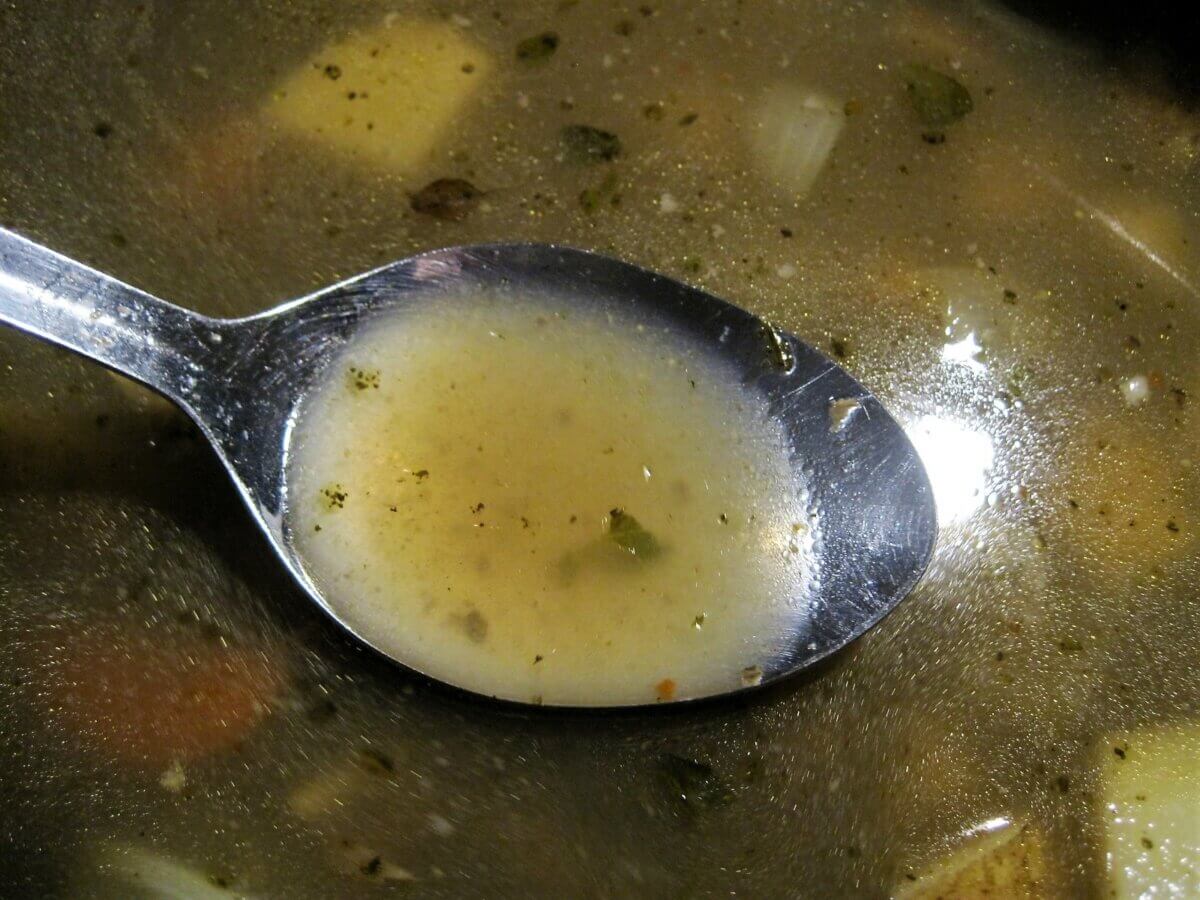
Homemade broth can be used in so many dishes, but we will use it later on in rice pilaf.
Ingredients
- Reserved bones from chicken roast
- 2 bay leaves
- 3 whole allspice berries
- 1 teaspoon whole mustard seeds
- 1 teaspoon whole coriander seeds
- 1 teaspoon celery seeds
- Crushed red peppers
- 1 onion, diced
- 6 cloves of garlic, minced
- Salt and pepper to taste
Directions
- Take the bones and attached meaty bits that you reserved from that first roast, and put them in a large stockpot with the other ingredients.
- Bring to a boil and then simmer as long as you can — the longer the better.
- At the end of the process, strain out the solids, mix in any broth leftover from the first roast, and then add salt to taste.
You now have a wonderful broth that you can use to drink as-is, or as the base for the next dish.
Meal #5: Pilaf
Rice pilaf is a great way to utilize your homegrown chicken broth from the last recipe.
Ingredients
- 2 large carrots
- 3 celery sticks
- 1 onion
- 1 head of garlic
- 1-inch knob of ginger – minced
- 2 cups uncooked brown rice
- 2 tablespoons oil or butter
- 4 cups chicken broth (add supplemental water if needed)
- 2 teaspoons cumin
- 2 teaspoons crushed coriander
- 2 teaspoons ground turmeric
- 1/2 teaspoon cayenne pepper
- 1/2 teaspoon cinnamon
- 1/4 teaspoon ground cloves
- Pinch of ground cardamom
- 1 cup yogurt
- 1 tablespoon dried and crushed mint leaves
Directions
- Dice the carrots, celery stalks, onion, garlic, and ginger and set to the side.
- In either a large skillet that has a lid or a large saucepot, combine the uncooked brown rice and oil or butter. Turn heat to medium and stir the dry rice until it is nicely toasted and fragrant (but not burned — mix often and watch closely).
- Add the vegetables and briefly mix until they are incorporated.
- Pour the broth over the hot rice and vegetables. If there’s not enough broth, add water until you have the right amount.
- Stir, then add the cumin, crushed coriander, ground turmeric, cayenne, cinnamon, ground cloves, and cardamom.
- Cover and simmer until all the liquid is absorbed. Taste and adjust seasonings as needed. Then, mix the yogurt with the dried and crushed mint leaves, salt, and a generous dash of black pepper.
- Serve the pilaf in bowls, topped with the yogurt sauce, and enjoy.
Cooking head-to-tail was once a necessity of life when waste wasn’t an option. Nowadays, I sometimes hear of chefs employing these practices in high-scale restaurants as if it is a new trend, but it need not be. Make the most of your hard work on the homestead, and make those thoughtfully-raised birds into a series of meals to be remembered.
Of course, my set of ideas is just a start. I would love to hear other homestead ideas on how to thriftily and tastily stretch meat into multiple meals. Chime in in the comments below.


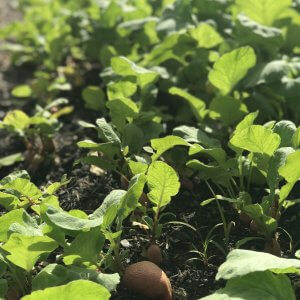
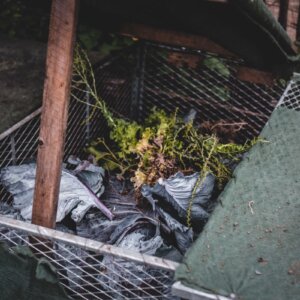




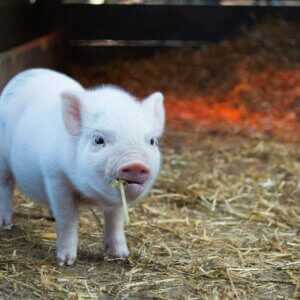

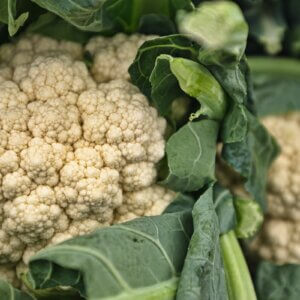


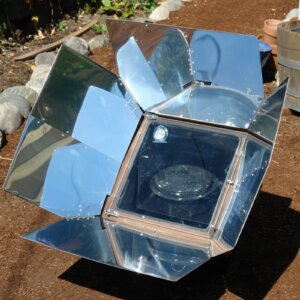













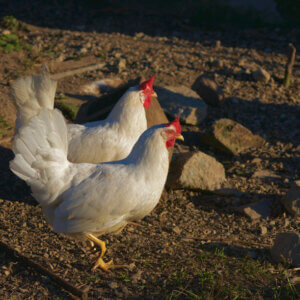














Leave a Reply